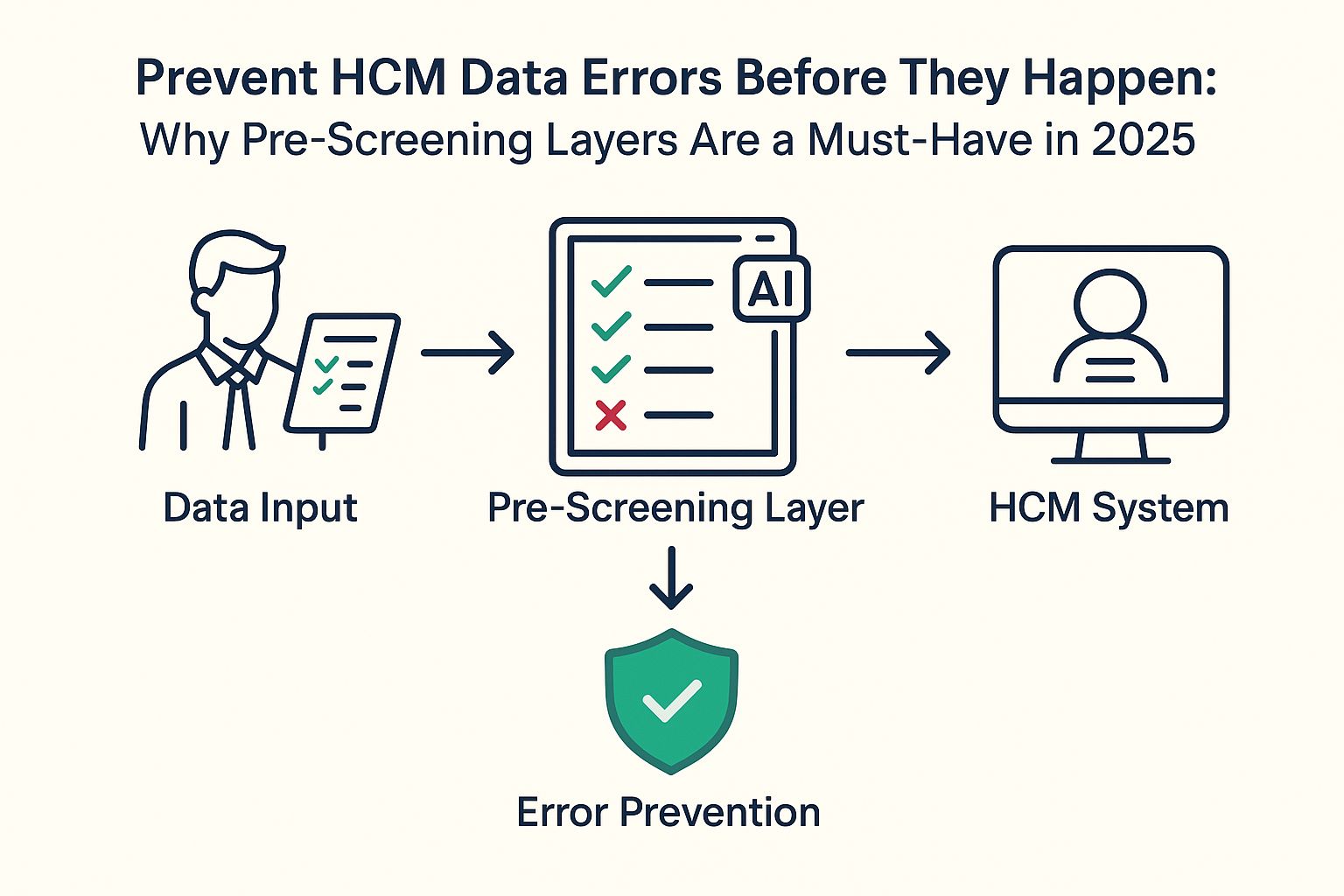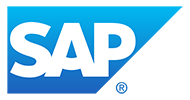Most HCM failures aren’t caused by software—they’re caused by bad data. In 2025, leading HR teams are solving the problem at the source with pre-screening layers that validate and clean data before it reaches the HCM system. Learn how CloudApper hrPad helps organizations prevent errors, reduce rework, and protect compliance with smarter workflows.
Table of Contents
What if the biggest threat to your HCM success isn’t your system — but the data going into it? Every day, HR teams rely on accurate data to trigger critical business actions like employee terminations, payroll processing, policy enforcement, and compliance tracking. Yet, even a single missing field, date mismatch, or misclassified job code can derail these processes instantly. The consequences include failed integrations, payroll delays, compliance violations, and hours of unplanned manual corrections.
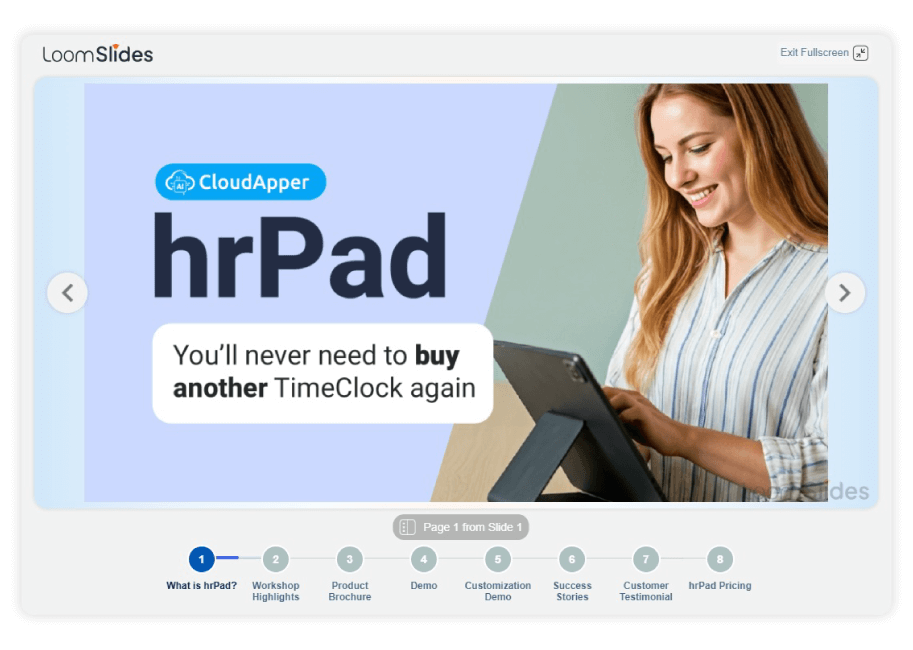
For more information on CloudApper hrPad visit our page here.
This is why pre-screening layers are emerging as one of the most essential tools in the HR tech stack. Pre-screening layers act as automated validation checkpoints that clean and verify employee data before it reaches your HCM system. These layers are no longer optional—they’re fast becoming a standard for forward-thinking HR teams that want to prevent issues rather than react to them.
In this article, we explore how organizations are leveraging pre-screening and validation strategies to reduce HCM errors, and why they’re considered a necessity for successful HR operations in 2025.
The Hidden Cost of Bad HCM Data
According to HR operations leaders, the root of most HCM failures is not faulty software, but bad input data. Terminations may fail due to a missing final pay date. Time records may be rejected due to out-of-policy shift overlaps. Compliance tasks may not trigger if the associated data fields are skipped or misconfigured. These issues, though seemingly small, create cascading failures in workflows, delay downstream processes, and overburden HR and IT teams with troubleshooting work.
The issue is systemic. Many frontline managers are still relying on static spreadsheets, outdated forms, or unclear submission templates. Data is entered under time pressure, often with little understanding of backend dependencies. Inconsistencies emerge across departments and regions, especially for organizations operating in multiple states or countries. As the complexity of data grows, so does the risk.
The Shift Toward Pre-Screening and Validation
A growing number of companies are addressing this challenge by introducing a pre-screening and validation layer between the people entering data and the HCM system receiving it. Rather than reacting to failed processes, this approach ensures that all inputs are correct and compliant before they enter the system.
CloudApper hrPad is one such solution enabling this shift. It serves as a front-end interface that captures employee actions like time punches, terminations, PTO requests, and compliance attestations while enforcing validation logic in real time. It operates independently but integrates seamlessly with any HCM platform.
Smart forms within hrPad are designed to adapt dynamically based on the employee’s role, location, and other parameters. The system ensures that mandatory fields are completed, dates are logically sequenced, and policy conditions are satisfied. Incomplete or incorrect entries are flagged immediately. This drastically reduces the chances of errors downstream.
Another major advantage is compliance assurance. hrPad can enforce required documentation, track acknowledgments, and capture electronic attestations as part of standard workflows. These records are time-stamped and logged, providing audit-ready documentation that helps organizations meet regulatory requirements.
Real-World Impact
Companies that have implemented pre-screening layers like hrPad are seeing transformative results.
Classic Collision, a leading national auto repair chain, deployed hrPad across over 200 locations to manage time capture and terminations. Within months, they experienced a 68 percent reduction in HR service tickets related to data errors and spent 75 percent less time correcting termination issues. Compliance processes, once managed manually, were streamlined through automated workflows and digital attestations.
Applegreen, a global retail fuel brand, used hrPad to validate labor law rules for younger workers and enforce break policies across multiple regions. By adding real-time validation at the point of data entry, the company prevented legal risks and significantly reduced reliance on manual review.
In both cases, the companies retained their core HCM systems but strengthened them by addressing the root cause of errors — unvalidated inputs.
The Strategic Value of Pre-Screening in 2025
As HR operations scale and regulatory scrutiny increases, the cost of poor data hygiene will only rise. Organizations are under pressure to process changes faster, reduce compliance risk, and increase accuracy across increasingly distributed workforces. HCM platforms are robust but unforgiving when it comes to data integrity. They expect clean, complete, and logically sound information, and anything less results in failure.
A pre-screening and validation layer gives HR teams the ability to enforce quality at the point of entry. It empowers frontline managers with guided, intuitive forms while giving HR and compliance teams confidence in the accuracy of every transaction. The result is fewer errors, stronger compliance, reduced administrative workload, and a better experience for everyone involved.
Final Thought
No matter how advanced your HCM platform is, it can’t prevent errors created at the source. By the time data reaches the system, it’s often too late. The smartest organizations are no longer treating error resolution as a downstream problem. They’re moving upstream, solving the issue at its origin with solutions like CloudApper hrPad.
A pre-screening and validation layer is more than a productivity tool — it’s a safeguard for your entire workforce management process. It ensures that every entry, every action, and every decision is backed by clean, compliant, and validated data.
What is CloudApper AI Platform?
CloudApper AI is an advanced platform that enables organizations to integrate AI into their existing enterprise systems effortlessly, without the need for technical expertise, costly development, or upgrading the underlying infrastructure. By transforming legacy systems into AI-capable solutions, CloudApper allows companies to harness the power of Generative AI quickly and efficiently. This approach has been successfully implemented with leading systems like UKG, Workday, Oracle, Paradox, Amazon AWS Bedrock and can be applied across various industries, helping businesses enhance productivity, automate processes, and gain deeper insights without the usual complexities. With CloudApper AI, you can start experiencing the transformative benefits of AI today. Learn More
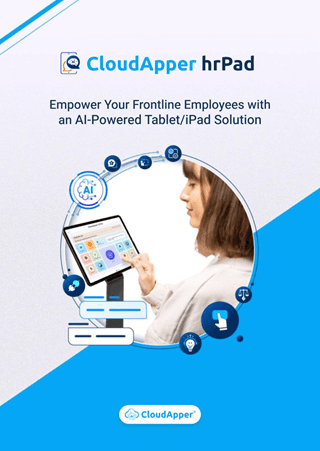
Brochure
CloudApper hrPad
Empower Frontline Employees with an AI-Powered Tablet/iPad Solution
Download Brochure
CloudApper AI Solutions for HR
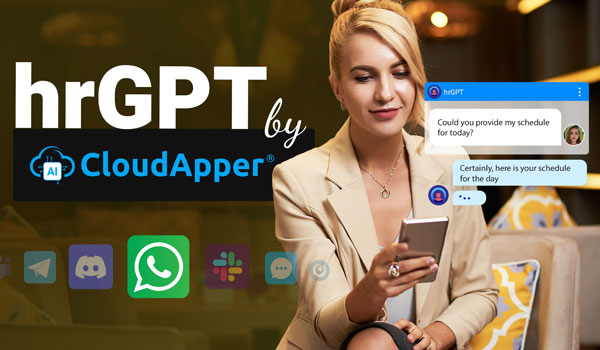


- Works with
- and more.
Similar Posts

Ethical Employee Monitoring: How CloudApper hrPad Is Helping U.S. Businesses…

From Legacy Time Clocks to AI-Driven ESS: The Missing Link…

![Prevent HCM Data Errors Before They Happen Why Pre-Screening Layers Are a Must-Have in [current-year]](https://www.cloudapper.ai/wp-content/uploads/2025/08/Prevent-HCM-Data-Errors-Before-They-Happen-Why-Pre-Screening-Layers-Are-a-Must-Have-in-current-year-1200x800.jpg)
